Sketch of the Virgo interferometer
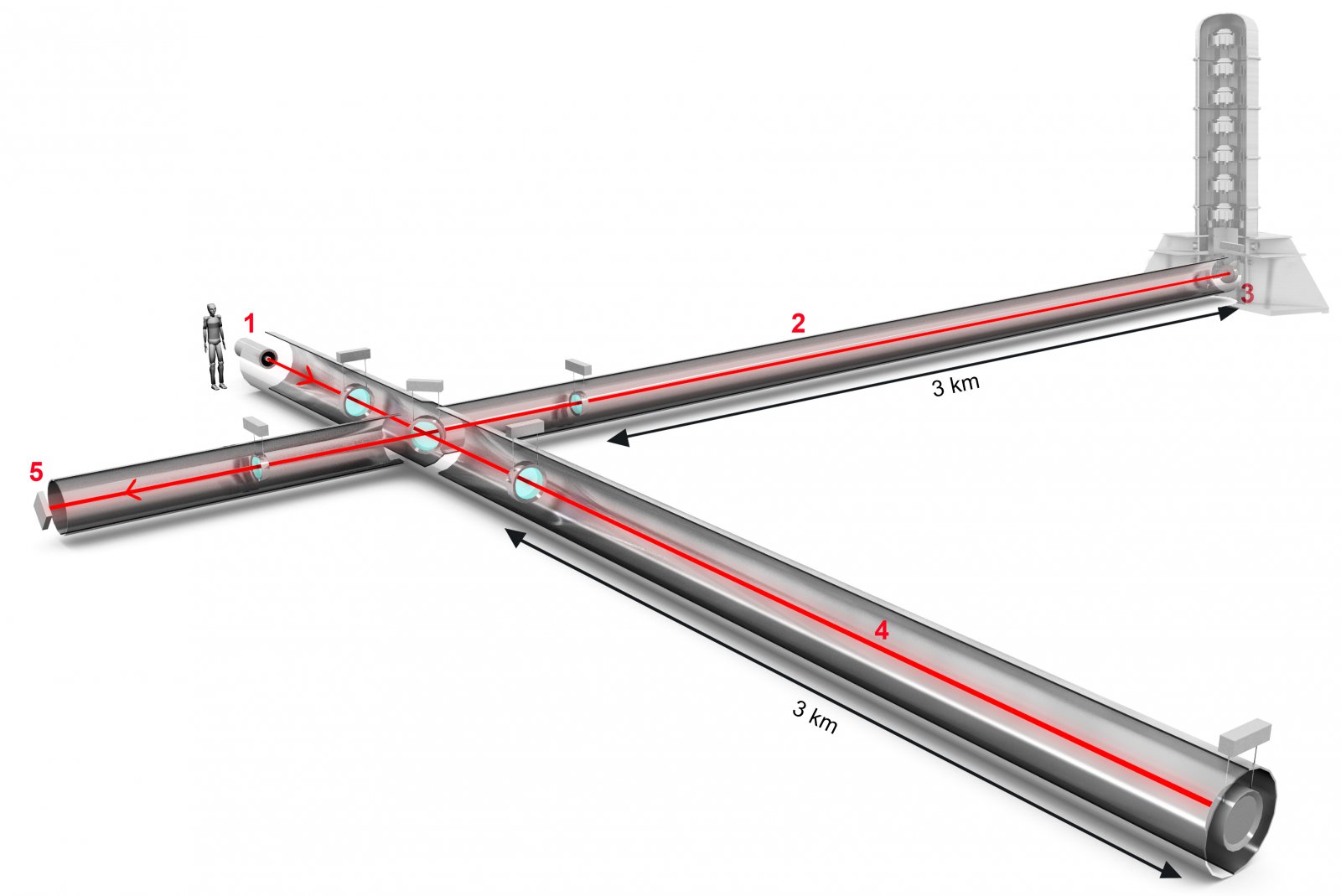
Artist’s sketch of the Virgo interferometer with its suspended mirrors.
Credit: Virgo Collaboration/LAPP
Album: Observatory
Tags:

Artist’s sketch of the Virgo interferometer with its suspended mirrors.
Credit: Virgo Collaboration/LAPP
Album: Observatory
Tags:
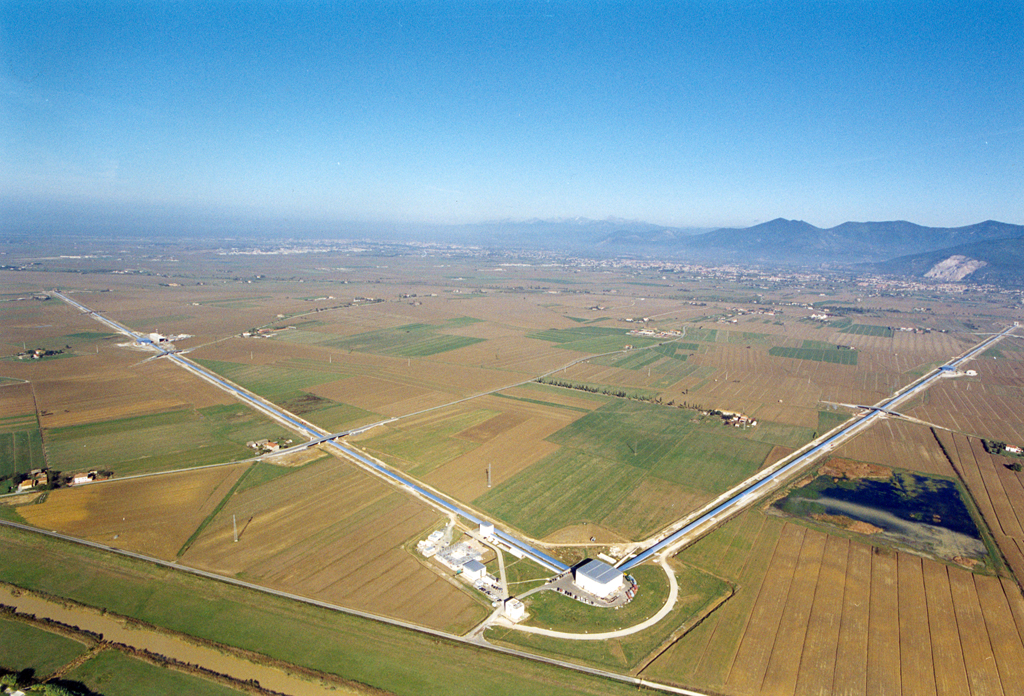
The Virgo interferometer is located in the south of Pisa in Italy. The main building in which the laser beam is generated, sent into the interferometer arms, and measured on photodiodes is visible at the bottom of the images. The buildings around the two 3 kilometer long arms are visible: the laser beam propagates all the arms and is reflected by a mirror
suspended in a building at each end.
Credit: Virgo Collaboration
Album: Observatory
Tags:
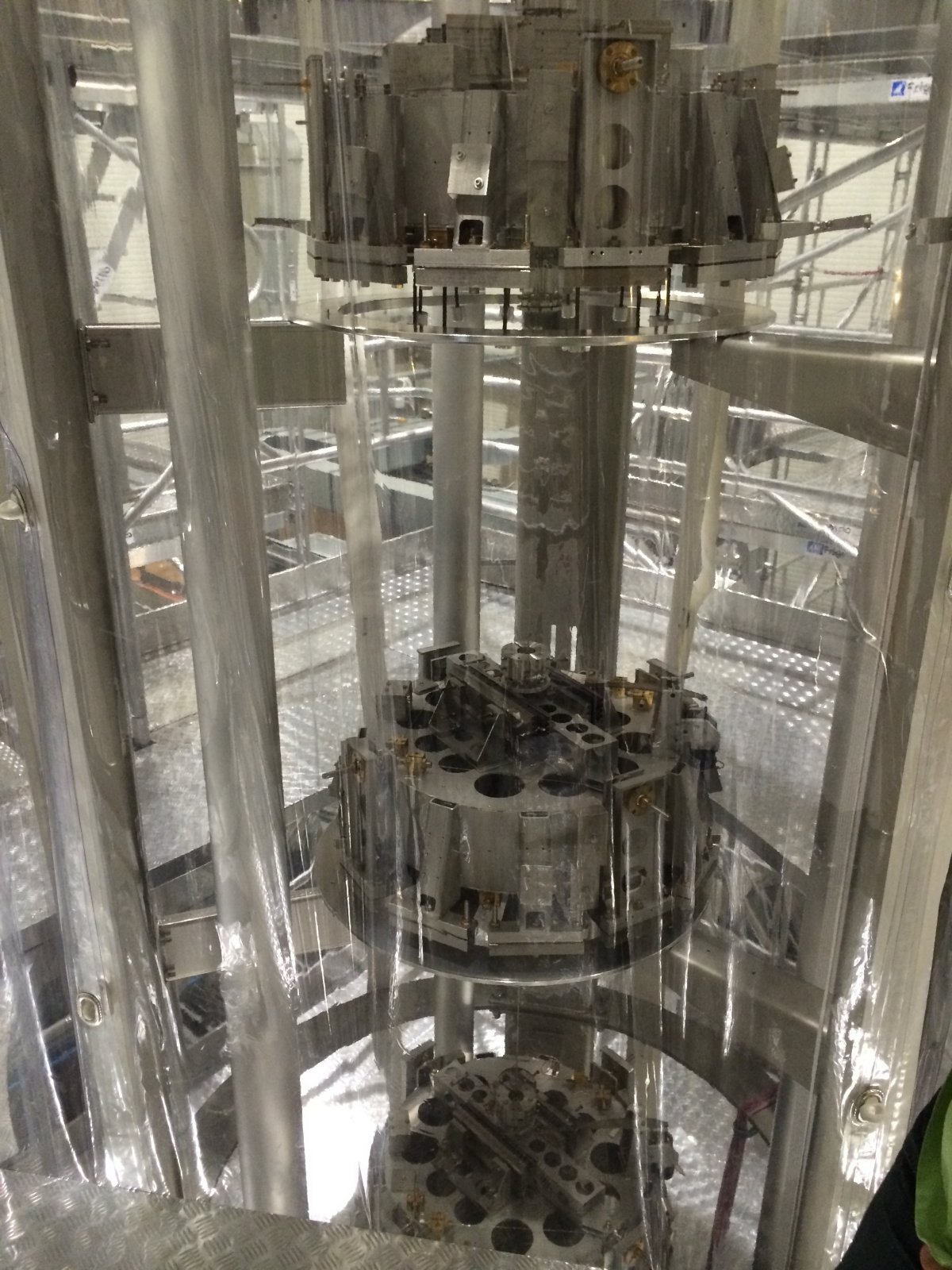
Three elements that attenuate the vertical vibrations are visible. The wire used to suspend one to each other is also visible.
The vacuum tank is opened but protective plastic sheets have been placed all around the suspension to protect it against dust.
Credits: Virgo Collaboration
Album: Instruments – Payloads/Suspensions/Mirrors
Tags:
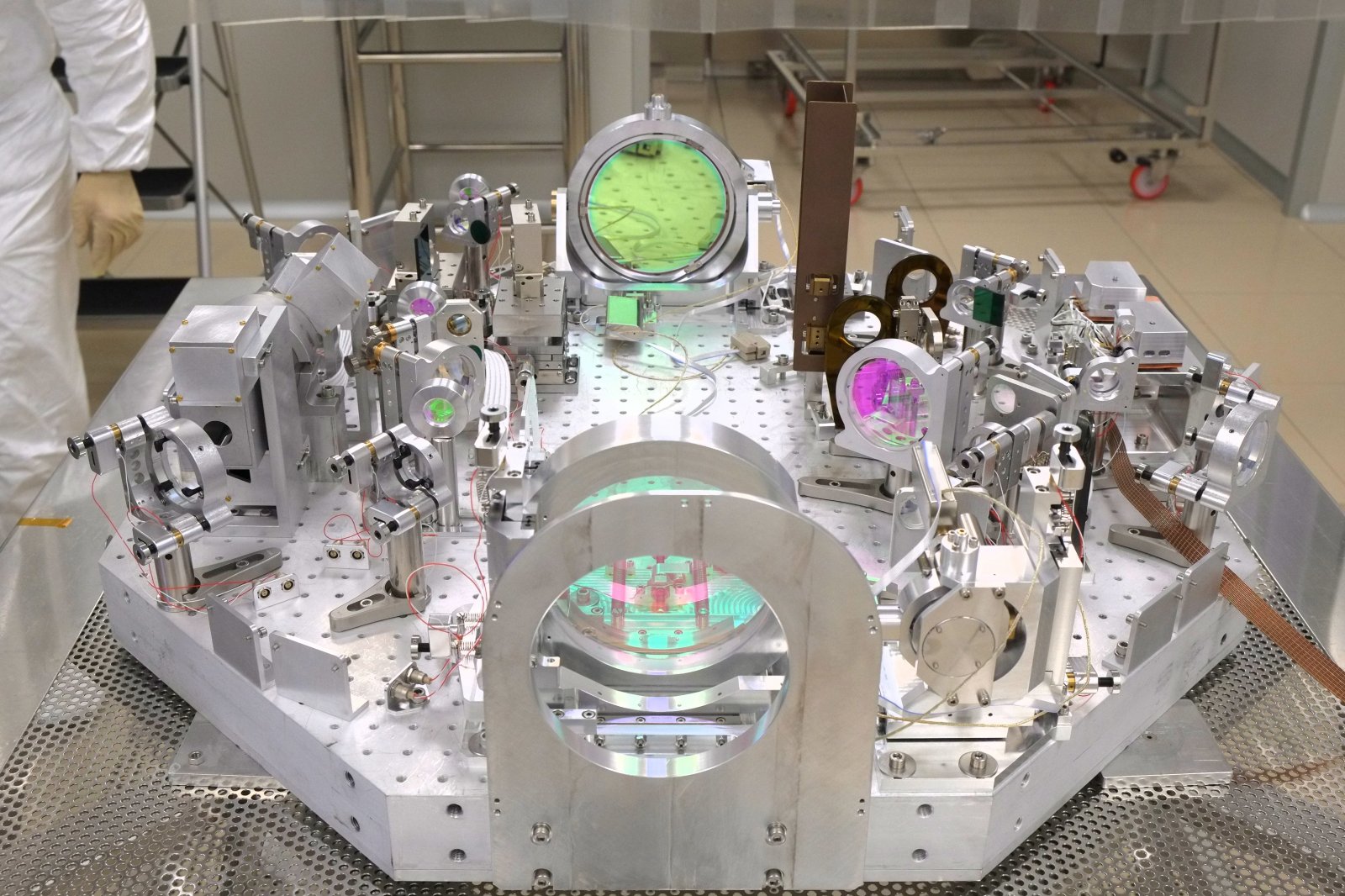
Assembly of the optical bench in a clean room. This bench has a “diameter” of about 88 cm. It has been suspended to a suspension in April 2015.
This bench collects the laser beam at the asymmetric port of the Virgo interferometer, the one whose power will vary when a gravitational wave passes by. The beam size is reduced from 2 cm on the first big optical lens down to 300 µm on a small optical cavity called mode-cleaner cavity. The beam power is then measured on a photodiode placed on another optical bench.
Credits: Virgo Collaboration/LAPP
Album: Instruments – Laser&Optics
Tags:
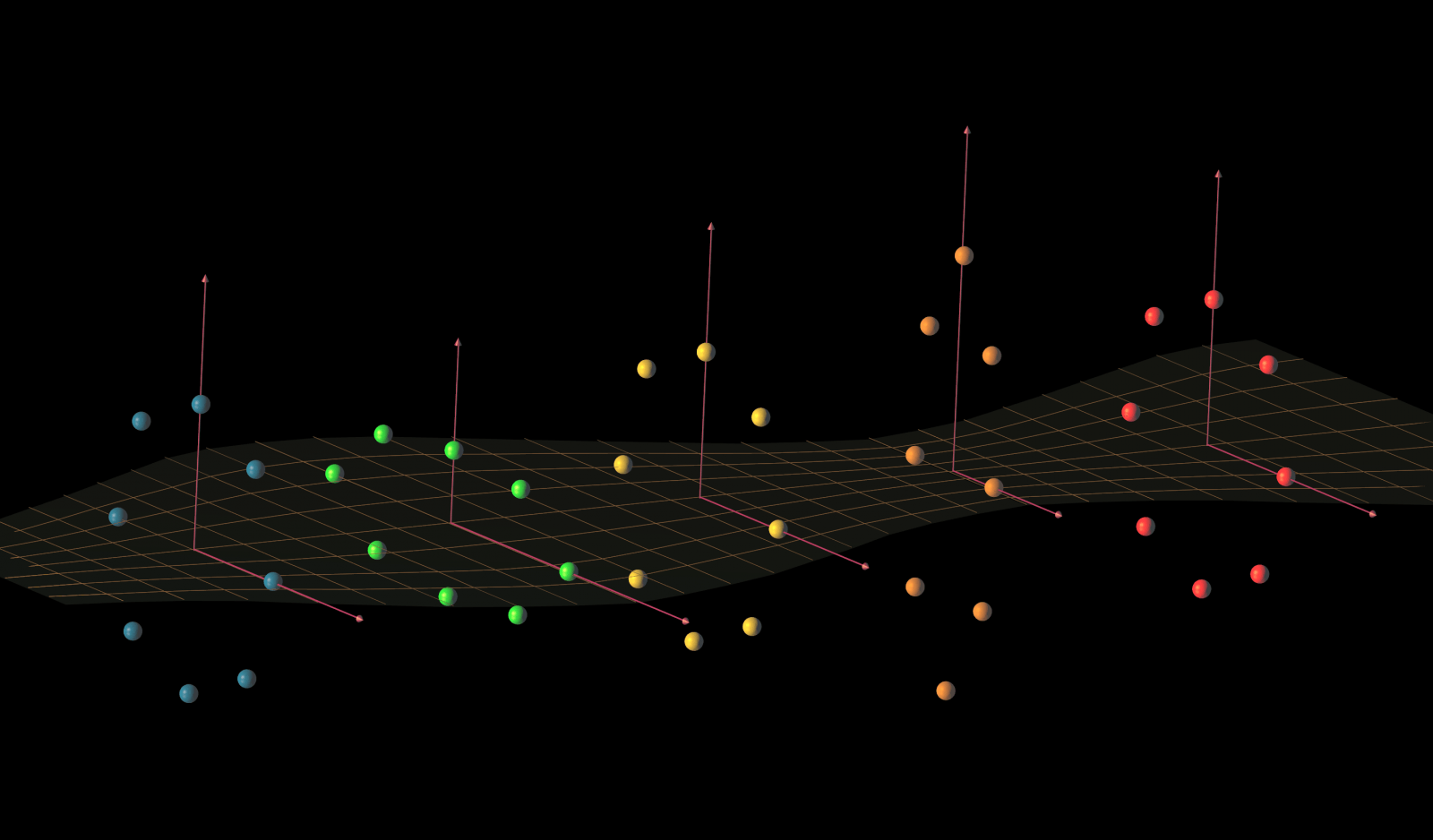
Illustration of the (largely exaggerated) effect a gravitational wave passing by five groups of test-masses.
The masses do not interact between them. They are initially located along parallel circles centered around the same axis. The circles are separated by a quarter of the gravitational wave wavelength. The grid plane and the axis help the eye in order to visualize the modification of the distances between the test-masses.
Credit: Virgo Collaboration/LAPP/D. Buskulic
Album: Science – Gravitational Waves
Tags:
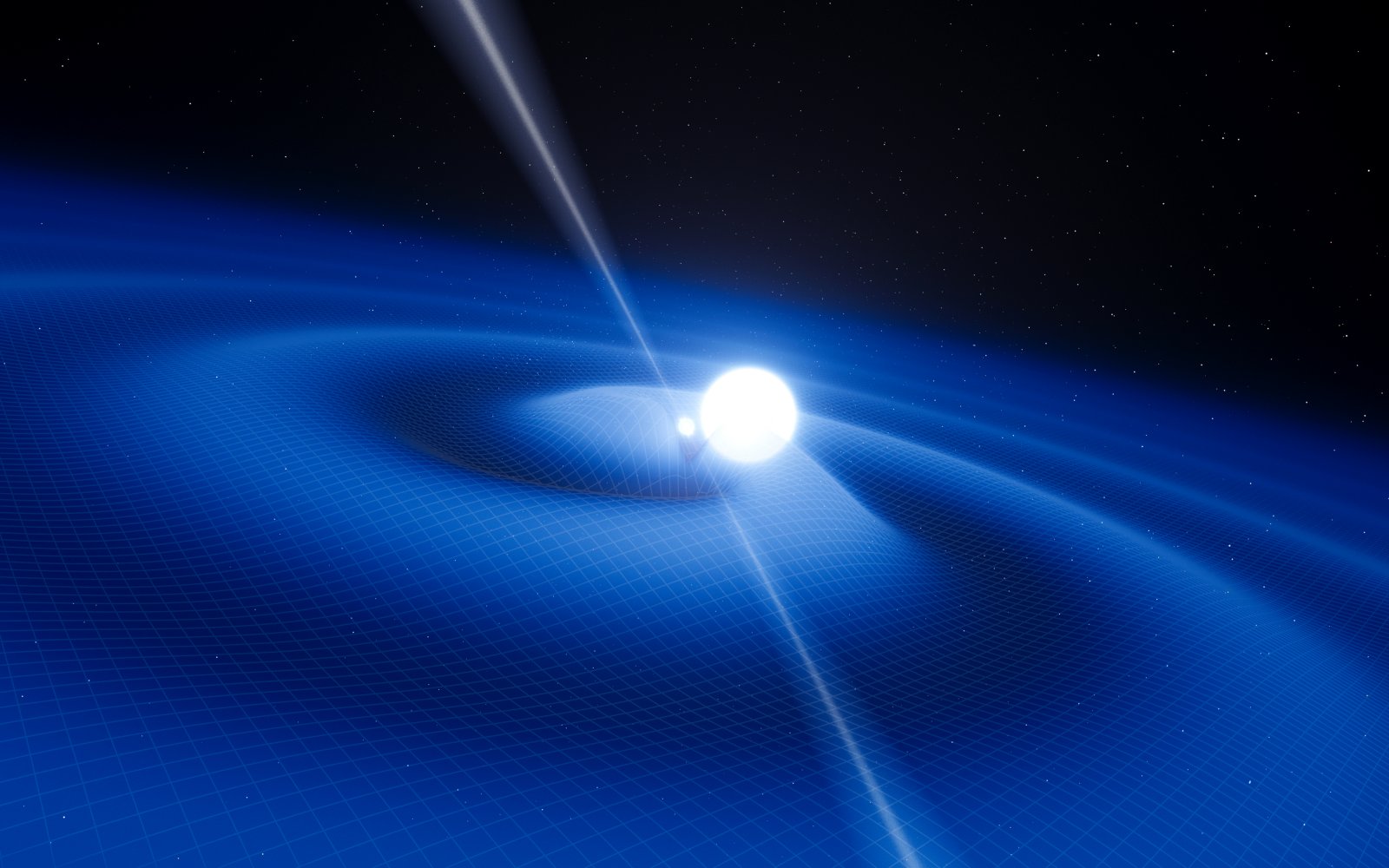
This artist’s impression shows the exotic double object that consists of a tiny, but very heavy neutron star that spins 25 times each second, orbited every two and a half hours by a white dwarf star. The neutron star is a pulsar named PSR J0348+0432 that is giving off radio waves that can be picked up on Earth by radio telescopes. Although this unusual pair is very interesting in its own right it is also a unique laboratory for testing the limits of physical theories. This system is radiating gravitational radiation, ripples in spacetime. Although these waves cannot be yet detected directly by astronomers on Earth they can be detected indirectly by measuring the change in the orbit of the system as it loses energy. As the pulsar is so small the relative sizes of the two objects are not drawn to scale.
Credit: ESO/L. Calçada
Album: Science – Gravitational Waves
Tags:
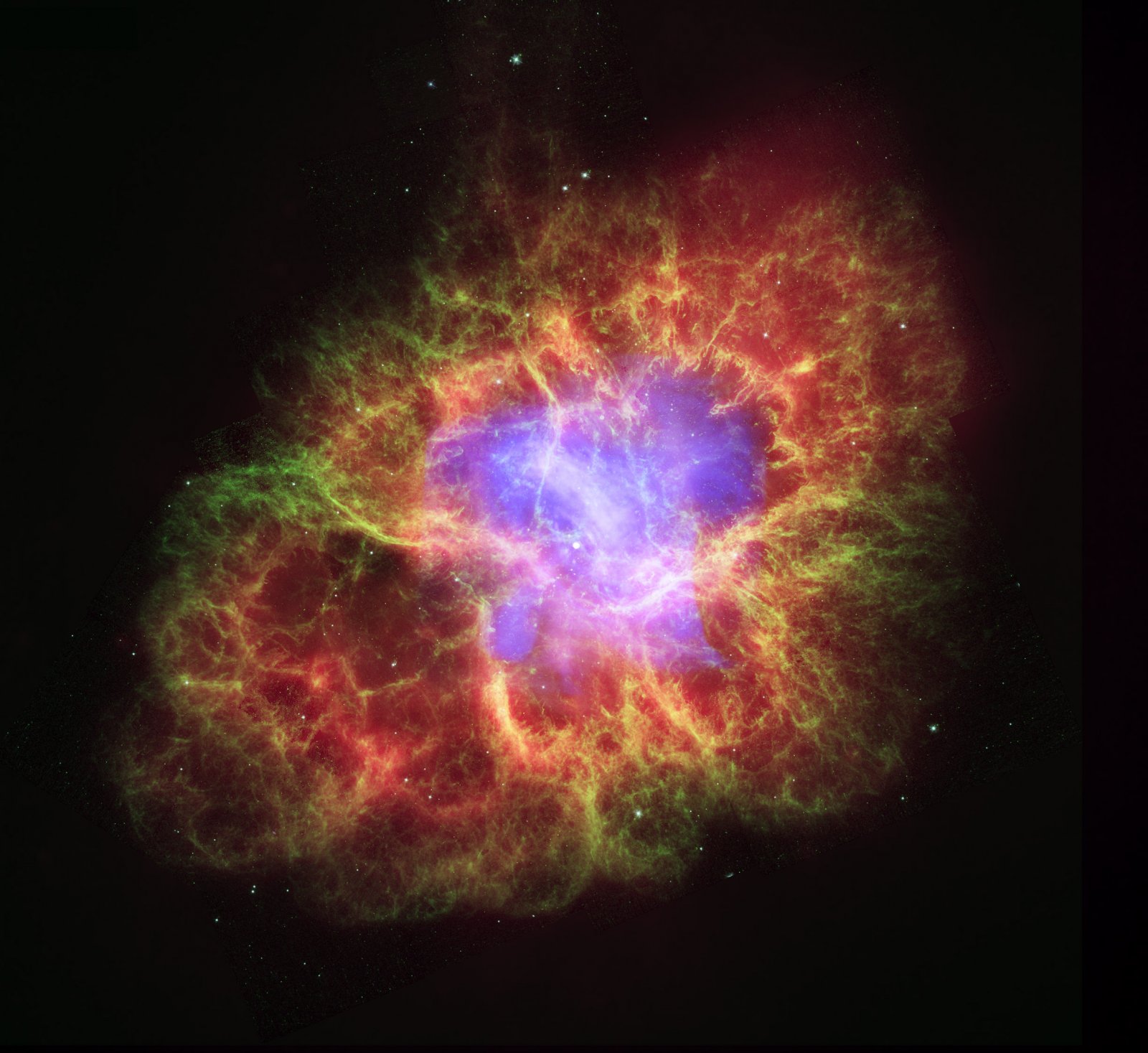
This composite image of the Crab Nebula uses data from three of NASA’s Observatories. The Chandra X-ray image is shown in light blue, the Hubble Space Telescope optical images are in green and dark blue, and the Spitzer Space Telescope’s infrared image is in red.
The neutron star, which has the mass equivalent to the sun crammed into a rapidly spinning ball of neutrons 20 km across, is the bright white dot in the center of the image.
Credit: NASA, ESA, CXC, JPL-Caltech, J. Hester and A. Loll (Arizona State Univ.), R. Gehrz (Univ. Minn.), and STScI.
Album: Science – Astrophysical Sources
Tags: